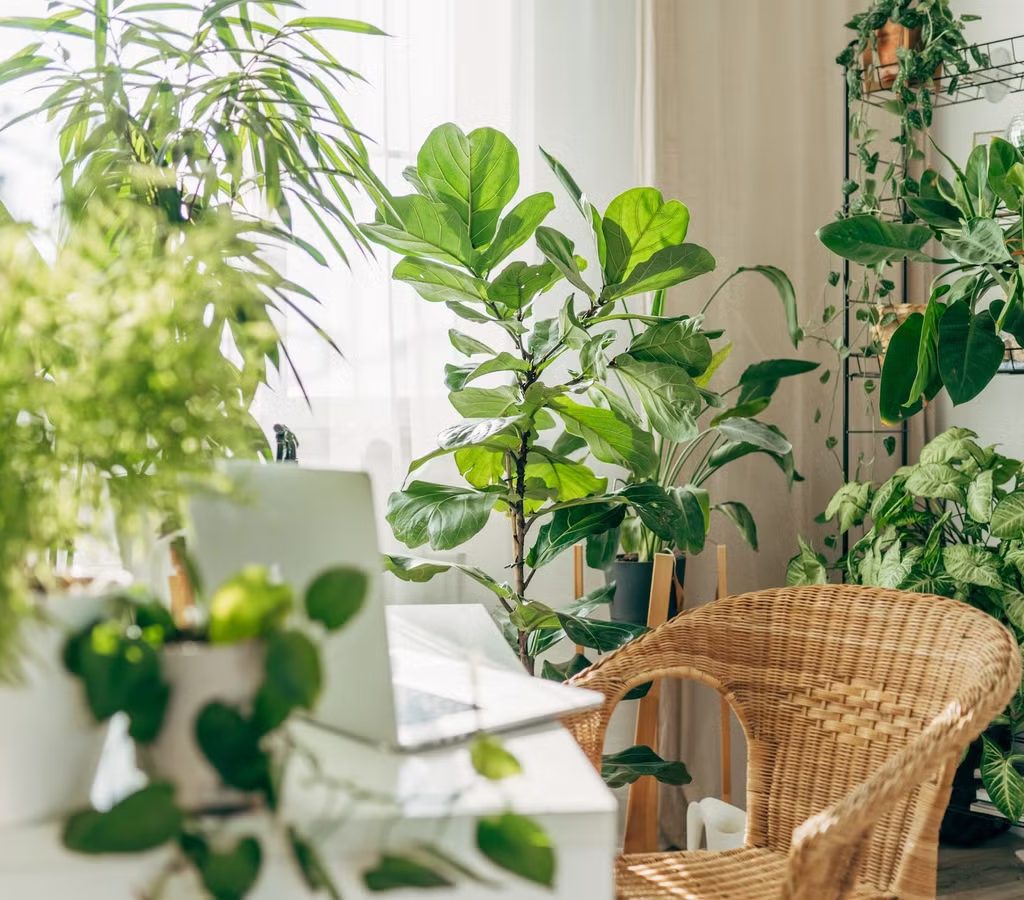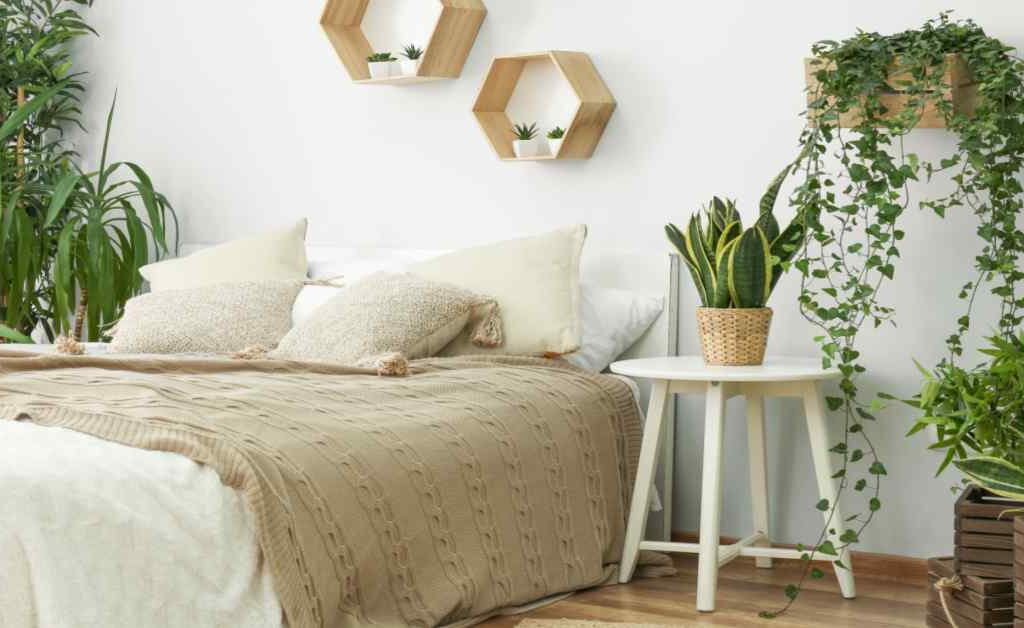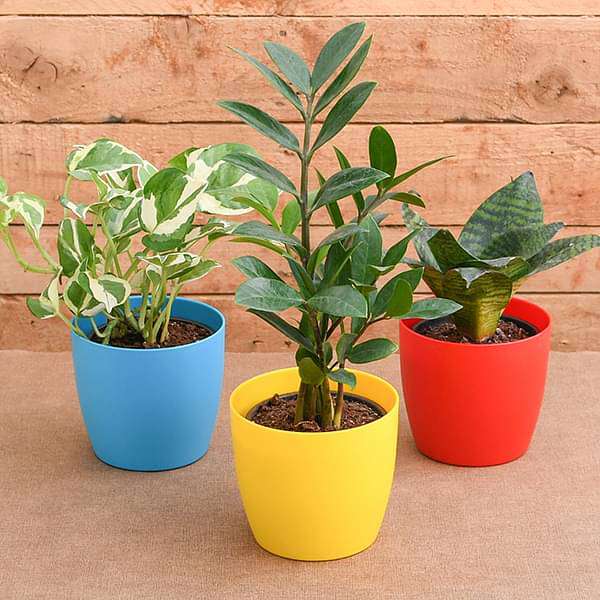Did you know the air inside your home can sometimes be more polluted than the air outside? Between paint fumes, cleaning chemicals, dust, and toxins from furniture, indoor air quality can quietly impact your health, mood, and sleep. Luckily, Mother Nature offers a simple, stylish, and effective solution: indoor plants that purify the air.
In this guide, we’ll explore the best bedroom plants for clean air — species proven to remove toxins, boost oxygen levels, and add natural beauty to your space. You’ll also learn how to care for them, arrange them, and avoid common indoor plant mistakes. Whether you’re a seasoned plant lover or a beginner, these air-purifying plants are the perfect companions for your bedroom sanctuary.
Why Air-Purifying Plants Are Perfect for Bedrooms

Your bedroom is your personal retreat — a place to unwind, rest, and recharge. By adding plants that naturally clean the air and release oxygen, you can:
- Improve sleep quality
- Reduce toxins like benzene, formaldehyde, and trichloroethylene
- Humidify dry air
- Lower stress and anxiety
- Add natural beauty to your decor
Some plants even release oxygen at night, making them especially suited for bedrooms.
10 Best Bedroom Plants for Clean Air
Let’s explore the top air-purifying plants that are beautiful, easy to care for, and perfect for bedrooms.
1. Snake Plant (Sansevieria)

Why It’s Great:
One of the best plants for removing toxins like formaldehyde, benzene, and xylene, the snake plant also releases oxygen at night, promoting restful sleep.
Care Tips:
- Tolerates low to bright indirect light
- Water sparingly — every 2-4 weeks
Bonus: Practically indestructible and ideal for beginners.
2. Peace Lily (Spathiphyllum)
Why It’s Great:
A beautiful flowering plant that filters out harmful chemicals like ammonia, benzene, and formaldehyde. Its glossy leaves and white blooms add elegance to any bedroom.
Care Tips:
- Prefers low to medium indirect light
- Keep soil slightly moist
Note: Keep away from pets, as it can be mildly toxic if ingested.
3. Areca Palm (Dypsis lutescens)
Why It’s Great:
A lush, tropical plant that acts as a natural humidifier while removing airborne toxins.
Care Tips:
- Loves bright, indirect sunlight
- Keep soil evenly moist but never soggy
Bonus: Non-toxic to pets and improves room humidity.
4. Aloe Vera
Why It’s Great:
Not only does aloe purify the air by removing formaldehyde and benzene, but its medicinal gel can also soothe burns and skin irritations.
Care Tips:
- Needs bright, indirect light
- Water when soil dries out completely
Bonus: Releases oxygen at night, making it perfect for bedside tables.
5. Spider Plant (Chlorophytum comosum)
Why It’s Great:
One of the easiest houseplants to care for, it efficiently removes carbon monoxide, formaldehyde, and other pollutants.
Care Tips:
- Prefers indirect sunlight
- Water when the top inch of soil is dry
Bonus: Produces baby “spiderettes” you can propagate.
6. English Ivy (Hedera helix)
Why It’s Great:
Renowned for removing mold spores and airborne toxins, making it ideal for people with allergies.
Care Tips:
- Likes bright, indirect light
- Water when the soil surface feels dry
Note: Ivy is toxic to pets, so keep it out of reach.
7. Rubber Plant (Ficus elastica)

Why It’s Great:
Removes airborne toxins like formaldehyde and adds a bold, modern look to bedroom decor.
Care Tips:
- Thrives in bright, indirect light
- Water when the top 2 inches of soil feel dry
Bonus: Can grow tall, making it great for bedroom corners.
8. Boston Fern (Nephrolepis exaltata)
Why It’s Great:
An attractive, bushy fern that helps remove pollutants and increase indoor humidity.
Care Tips:
- Prefers indirect sunlight and high humidity
- Keep soil consistently moist
Tip: Mist regularly or place near a humidifier.
9. Tulsi (Holy Basil)
Why It’s Great:
An Ayurvedic healing plant known to purify air, release oxygen at night, and relieve stress.
Care Tips:
- Needs 4-6 hours of direct sunlight
- Water when the top soil feels dry
Bonus: Leaves can be used for herbal teas.
10. Gerbera Daisy (Gerbera jamesonii)
Why It’s Great:
A flowering plant that removes benzene and releases oxygen at night. Its cheerful, colorful blooms brighten up any bedroom.
Care Tips:
- Needs bright, indirect light
- Water when the top inch of soil is dry
Note: Needs a bit more attention than snake plants or aloe.
How to Arrange Air-Purifying Plants in Your Bedroom

For both aesthetic appeal and maximum air-purifying benefits:
- Place larger plants like rubber plants and areca palms in corners or near windows.
- Keep smaller plants like aloe vera, snake plants, and peace lilies on bedside tables, shelves, or window sills.
- Avoid overcrowding — 2-5 plants are enough for a medium-sized bedroom.
- Use decorative pots to match your bedroom’s style.
Care Tips for Healthy Bedroom Plants
To keep your air-purifying plants healthy and thriving:
- Rotate plants every few weeks for even growth.
- Wipe leaves monthly with a damp cloth to remove dust and improve photosynthesis.
- Use room-temperature, filtered water when possible.
- Avoid overwatering — check soil moisture before watering.
- Place tropical plants near a humidifier or mist them occasionally, especially in dry seasons.
Benefits Beyond Clean Air
Adding these plants to your bedroom not only improves air quality but also:
- Reduces stress and anxiety
- Enhances mood and concentration
- Promotes restful sleep
- Boosts room humidity
- Adds natural beauty and a sense of calm
Many studies — including NASA’s Clean Air Study — have shown that certain houseplants effectively remove indoor pollutants and improve air quality in enclosed spaces.
Common Mistakes to Avoid

- Overwatering:
The most common plant care mistake. Always check soil before watering. - Insufficient Light:
Even low-light plants need indirect light to thrive. - Wrong Soil Type:
Use well-draining potting mix suitable for each plant species. - Neglecting Plant Maintenance:
Dusty leaves and crowded plant arrangements can reduce air-purifying benefits.
Final Thoughts
If you’re looking for a natural, beautiful way to enhance your bedroom air quality, these air-purifying plants are a perfect solution. From low-maintenance snake plants to elegant peace lilies and lush areca palms, there’s a plant to suit every style, space, and skill level.
By following these simple care tips and arranging a few of these green beauties in your bedroom, you’ll enjoy cleaner air, reduced stress, and better sleep — all while turning your personal space into a calming, rejuvenating retreat.
Start your bedroom plant collection today, and breathe easy tonight!





Leave A Comment